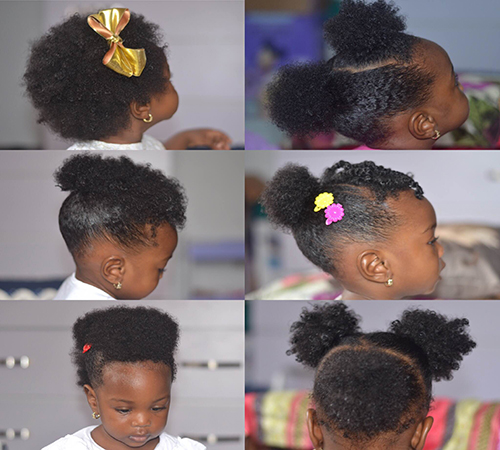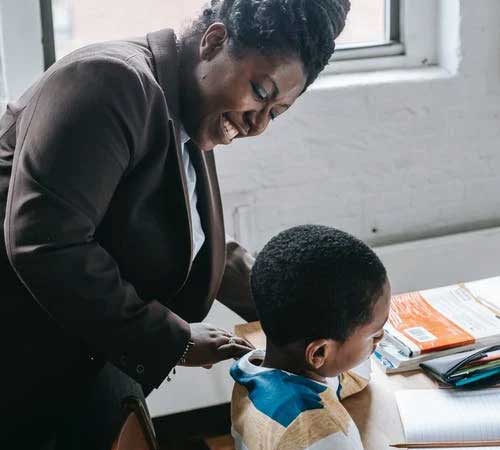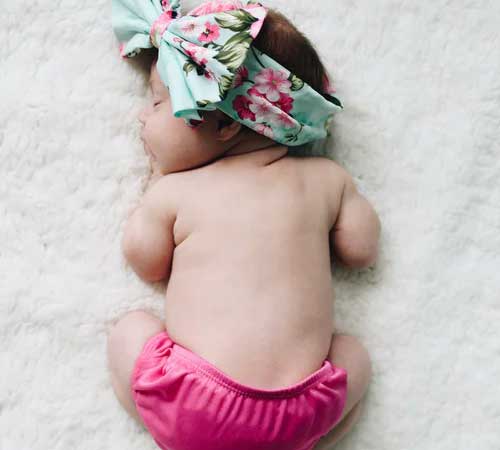
 As the world goes through months of waiting for a vaccine that will end the coronavirus (covid-19) pandemic, one thing that cannot wait is your daughter’s hair.
As the world goes through months of waiting for a vaccine that will end the coronavirus (covid-19) pandemic, one thing that cannot wait is your daughter’s hair.
Children’s hair is altogether a different ball game entirely and it needs to be managed.
Sadly the salons are closed and not all mothers can even get close to caring for their daughter’s hair all by themselves.
Another thing is that managing a child’s hair is a tricky task.
However tasking it is, you just have to accept the fact that you are now responsible for your daughter’s hairdo.
That said, if you are concerned about how to maintain your daughter’s hair during this coronavirus era, I’ve got the answers I think you might like:
The Washing Process
There are a few basics to be followed when washing a child’s hair.
A child’s hair growth depends on many factors and washing is one important one.
As much as possible, try to stick to natural shampoos, which are infused with vitamins and antioxidants.
Indeed, they will moisturise your child’s hair.
A good shampoo should have a pH of 4.5 to 5.5 and should have sodium citrate as a neutralising agent.” Also, you might want to:
1. Fit your shampoo regimen to your child’s needs
Consider your daughter’s hair type (straight, kinky, oily, dry), age and activity level, to determine how often to shampoo her hair.
Really, requirements will vary from child to child.
• Straight, non-oily hair should be shampooed once or twice a week.
• Kinky or dry hair can be shampooed every 7 to 10 days. Also, her hair should be rinsed with water and conditioned after heavy sweating or swimming.
2. Adjust shampoo frequency if need be
Monitor how your child’s hair responds to the suggested shampooing frequencies and make necessary adjustments if the need arises.
The weather or changes in activity levels may call for a change in shampooing frequency.
• If you notice that the hair and/or scalp is oily, add an additional shampoo per week until the oiliness is dealt with.
• If you notice dullness, shedding, or dryness, remove one shampoo per week until the hair gets well.
3. Go for a kid-friendly shampoo.
Consider the scent, gentleness, and your girl’s hair type when considering a shampoo to get.
For instance, if your daughter has dry hair, you should use a moisturizing shampoo.
• If your child has a scalp condition such as psoriasis, dermatitis, or dandruff, consult a dermatologist (you can get one online) about the best shampoo to use.
• If your child has fine or thin hair, try a lightweight shampoo that will not weigh her hair down.
4. Massage shampoo into your child’s hair
Wet the hair thoroughly before applying shampoo then release a quarter-sized amount of shampoo unto your palm and gently massage into your child’s scalp.
When you are done, ensure that all the shampoo is properly rinsed out of the hair.
- Use the ball of your fingertips to massage the scalp (scratching with your nails can irritate the scalp.)
- If your daughter has tight curly tresses, do not gather the hair on top of the child’s head as this can cause the hair to tangle.
- Adjust the amount of shampoo you use based on the child’s hair. For example, a child with thicker hair may need more than a quarter-sized amount of shampoo, and a child with thin or fine hair may need less.
- An itchy, dry, or flaky scalp could be a sign that all the shampoo was not rinsed out.
5. Decide if a conditioner is needed.
Kinky, curly hair and dry hair should be conditioned after the shampooing process.
Conditioner adds shine, makes the hair soft, and the cuticle smooth.
The conditioning needs of your daughter’s hair may change due to the climate. Hair may need conditioner during colder months or in drier climates.
6. Select conditioner based on your child’s hair needs
The three types of conditioners are leave-in conditioners, deep conditioners, and instant conditioners. The type of conditioner you choose is based on the child’s hair type.
For example, if your child has extremely dry hair, a deep conditioner would be best. And remember to always follow the directions on the conditioner bottle.
- Leave-in conditioners are left in and are not rinsed out of the hair. They can make the detangling process easier.
- Instant conditioners coat the hair and bring out softness and shine. They do not have to be left in the hair for very long before they are rinsed out. Between 10-20 minutes will do.
- Deep conditioners usually stay in the hair for about 15 minutes or more before rinsing. They can be used after every shampoo or once a month depending on the condition of your girl’s hair.
- A hot oil treatment can also be used once or twice a month to condition hair as well. Heat up some oil (e.g. olive oil, coconut oil, jojoba oil) and then gently massage the warm oil into the scalp and hair. Cover the hair with a shower cap or a warm towel and let the oil sit for about 20 minutes. Rinse out the oil when finished.
7. Applying conditioner to your child’s hair.
Conditioner should be applied to just-washed hair. Divide hair into sections (maybe four) and then apply a palm-sized amount of conditioner to each section. Focus conditioner application on the ends of the hair.
- Fuller and curlier hair can be divided into smaller sections to better distribute the conditioner.
- Work the conditioner through the hair using your hands or a wide-toothed comb.
- Of course, thicker and highly textured hair may need more conditioner than fine and thin hair. And as always, adjust the amount of conditioner you use based on the child’s hair type.
Styling Your Daughter’s Hair At Home
1. Detangle the hair
Always remember to detangle hair, before styling.
Here’s a quick simple way of doing it.
 Divide hair into sections and secure each section with a clip or ponytail holder.
Divide hair into sections and secure each section with a clip or ponytail holder.
Apply a leave-in conditioner or a detangler to a section, and then begin to comb the section. Begin at the ends of the hair and work your way down.
Be gentle as not to hurt your child or break the hair.
- Entertaining the child with a movie or a mobile game can help the detangling process go more smoothly. Also, ensure that both child and yourself are in a comfortable position before you get started.
- A wide-tooth comb is a good choice for detangling.
- Once a section is detangled, either braid it or twist it so it does not get tangled again.
- You want to be extra gentle with kinky and curly hair. This hair type ought to be divided into smaller sections for the detangling process. You can also use your fingers to aid the process.
- If your plan features applying heat to the child’s hair later, apply a heat protectant to the hair as you are detangling.
2. Avoid hairstyles that might cause tension
This is the time to safely tuck your daughter’s her into a suitable protective style.
As you do this, keep in mind that too tight braids, ponytails, and barrettes can cause children’s hair to fall out.
If the child mentions that he or she is in pain, quickly adjust the braid or the ponytail. Especially at a time like this, your child’s hairstyles should be as painless and possible.
Also, you want to pay special attention to the hairline.
Have you read: Top 8 free parental control apps
Styles as braids and cornrows should be done gently. Avoid excessive pulling and tension which could lead to thinning of the hairline.
3. Apply heat to her hair sparingly
Heat can be used to dry hair more quickly or to straighten kinky and curly hair, and a heat protectant should always be used before applying heat.
Generally, heat puts stress on the hair and can lead to dryness.
Since covid-19 has sent us all into a lockdown that will last a while, there is no rush off to somewhere and, in my opinion, no need for heat.
But if you must, make sure:
- Her hair is separated into sections before blow-drying. Start at the ends first and work your way down. For thicker and highly textured hair consider getting it blow-dried in smaller sections.
- If you are using a ceramic comb or iron to straighten hair, endeavor to put it on the lowest temperature setting possible.
- No matter the admiration you have for this process, try not to apply heat to your daughter’s hair more than once a week.
Diet Also Aid Hair Growth
Really, this is one area that most mothers need to give attention to.
If you want your daughter’s hair to steal the show, you need to consider what you feed her.
Diet plays a major role in hair growth and healthy hair too.
Here are few foods to add to your daughter’s diet to make her hair grow nicely.
1. Fruits and vegetables, including orange and yellow vegetables containing vitamin A, help promote a healthy scalp.
2. Strawberries, citrus fruits, dark green vegetables and tomatoes contain vitamin C which prevents hair breakage.
3. Vitamin E in green leafy vegetables and proteins in egg and fish also promote healthy hair.



